The State of Circular Innovations in the Indian Fashion and Textile Industries
Challenges and Opportunities Across the Supply Chain
The fashion industry is valued at $2 trillion1 and contributes to over 2% of global GDP but the industry’s supply chain accounts for 4% of global total greenhouse gas (GHG) emissions2. The direct impact of this complex, global, supply chain is most felt in terms of water consumption, energy emissions, waste creation and chemical usage as evident in the supporting graphic:
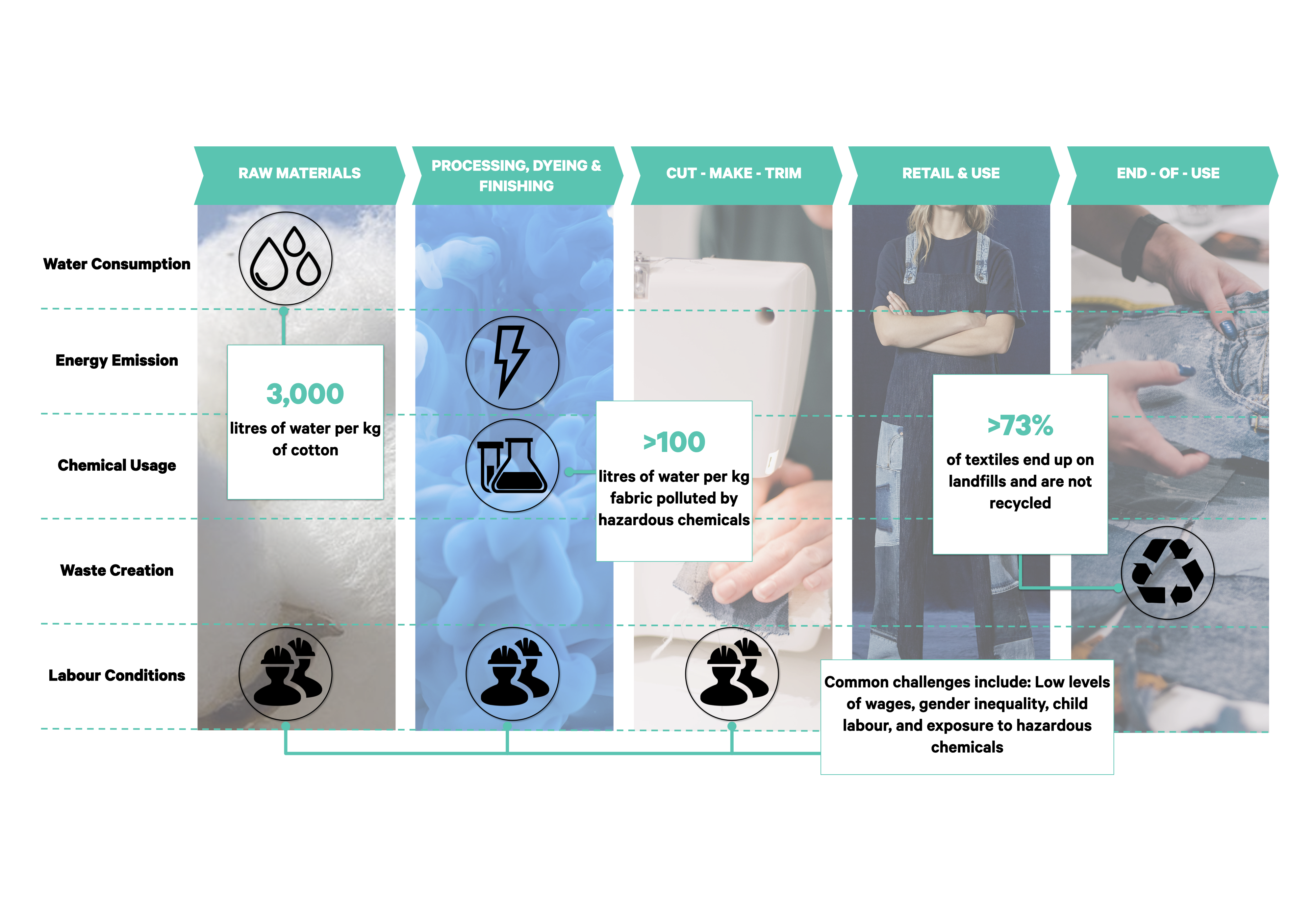 FIGURE 1
FIGURE 1
Innovators and their innovations have been the bed-rock of human progress and evolution from the very early civilisations. This truly collaborative effort, which maps and surfaces the amazing work already happening, helps reframe our mindset from 'what's not working?' to one that asks 'what's working despite the odds?'. The challenges plaguing the industry have been well documented, discussed and debated. Perhaps it's time to shift the narrative to solutions. This work does just that.
Venkat Kotamaraju, Director, Circular Apparel Innovation Factory (CAIF)In order to address these challenges, the industry must adopt innovative solutions that radically shift the supply chain as we know it. Progress so far has proven to be incremental, efficiency-focused initiatives, rather than implementing fundamentally disruptive solutions.
Ambitious sustainability targets have been set by many industry players and the required shift to a restorative and regenerative industry reflected in their targets is not attainable without innovation. Target setting is not the only activity the industry has undertaken, the “institutionalisation of innovation” across organisations has reflected a desire to integrate sustainability and innovation deeper into core business operations in order to put financial and environmental targets on equal footing.
Consumer behaviour and government views have rapidly evolved, as a growing awareness amongst consumers with regards to social and environmental issues tied to apparel and footwear production further accelerates the drive to move the industry forward. Stricter environmental regulation, and policies integrating a circular economy, are increasing pressure on the industry to change.
Innovative solutions, ranging from improvements in resource efficiency to a radical re-thinking of production processes and business models have emerged over the last 10+ years. These solutions have significant impact, not only decreasing the footprint of textile production and distribution, but also changing how we buy and use clothes.
The most promising innovation areas on Fashion for Good’s watch list are captured below. Each area represents different stages of maturity, different capital requirements, as well as varying, disruptiveness and return profiles.
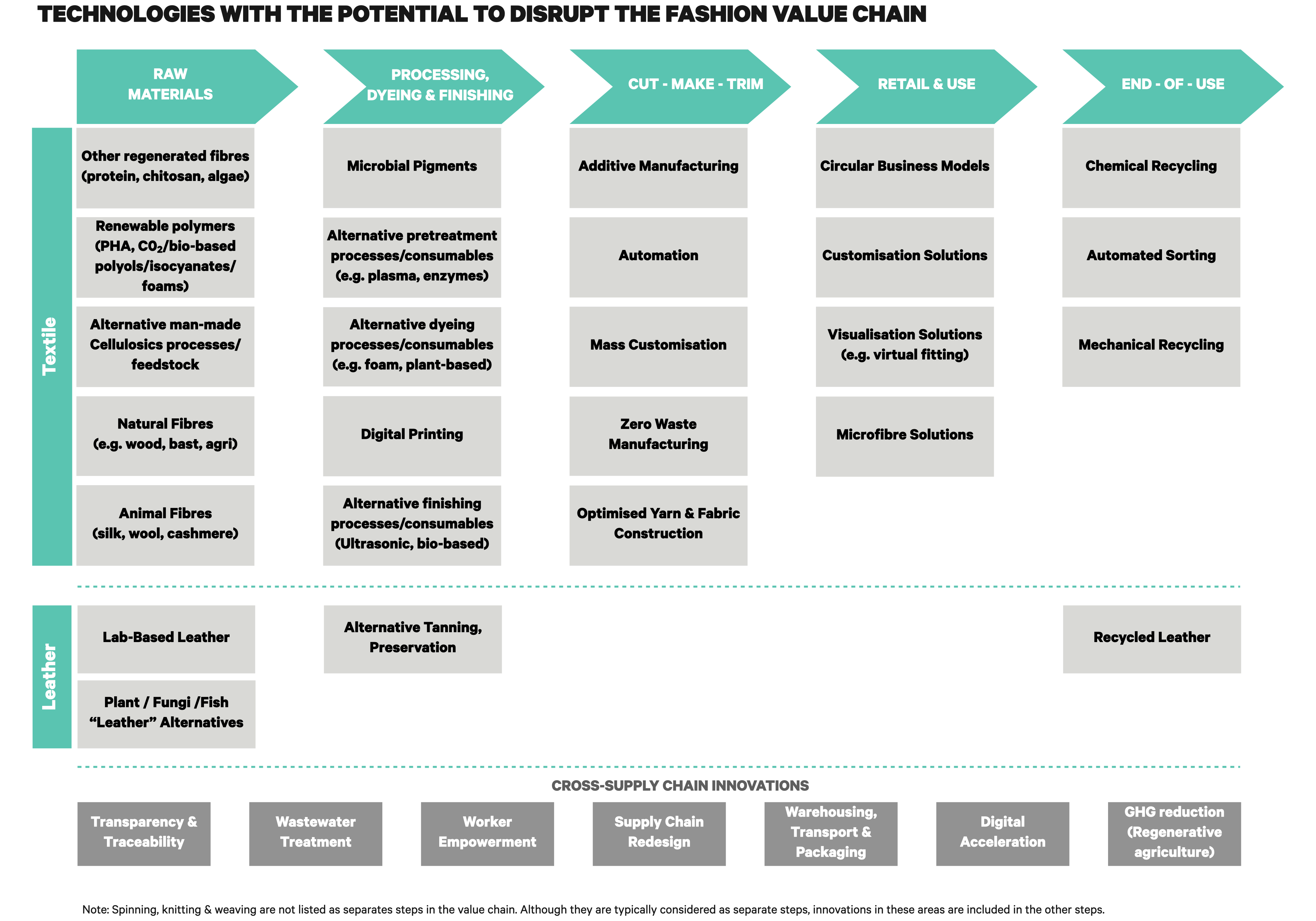
FIGURE 2
For purposes of this report, the specific focus areas identified in the graphic above have been used as a lens to analyse the innovation landscape in India, highlighting market activity, as well as the most pioneering solutions and white space areas for future innovation.
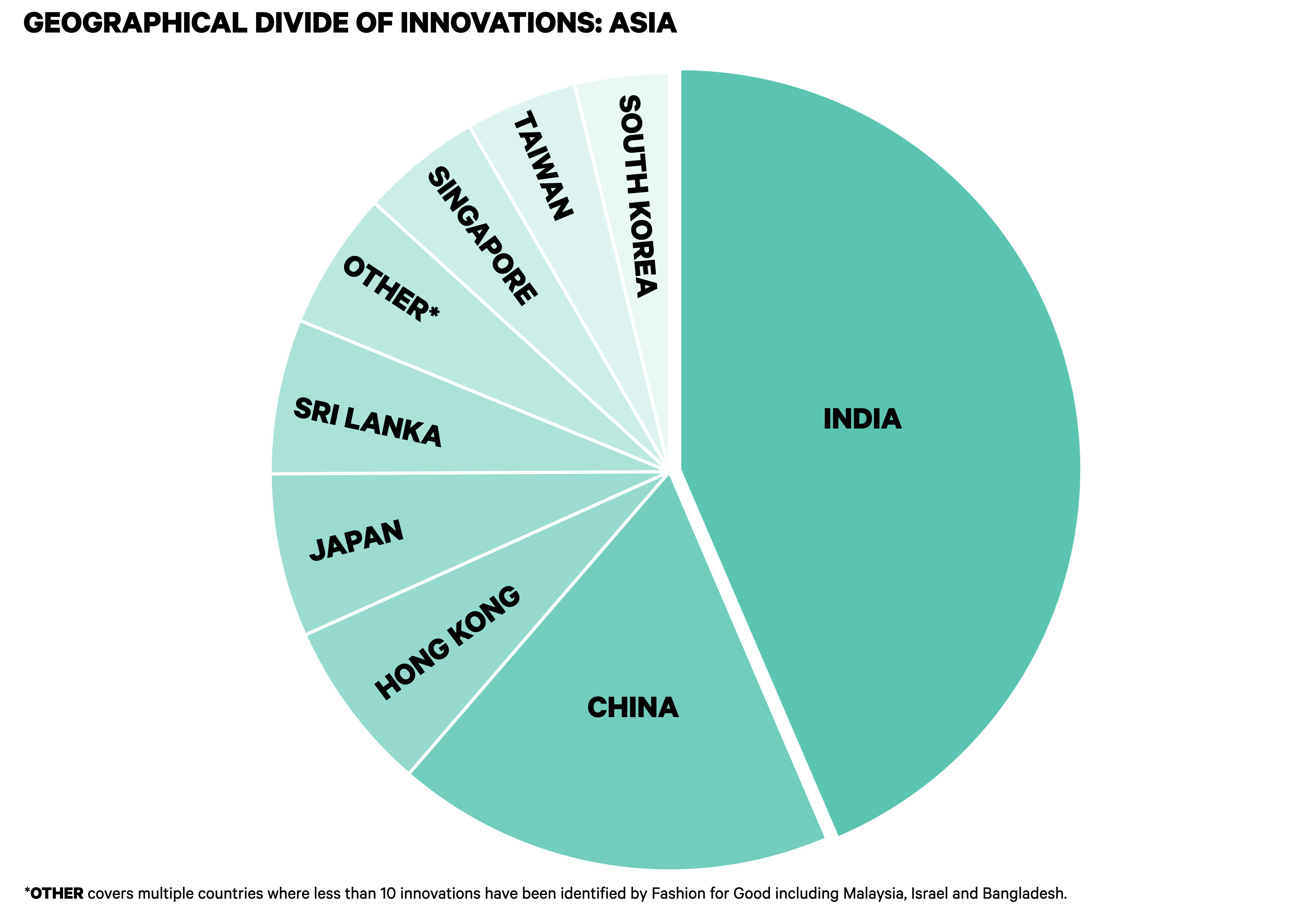
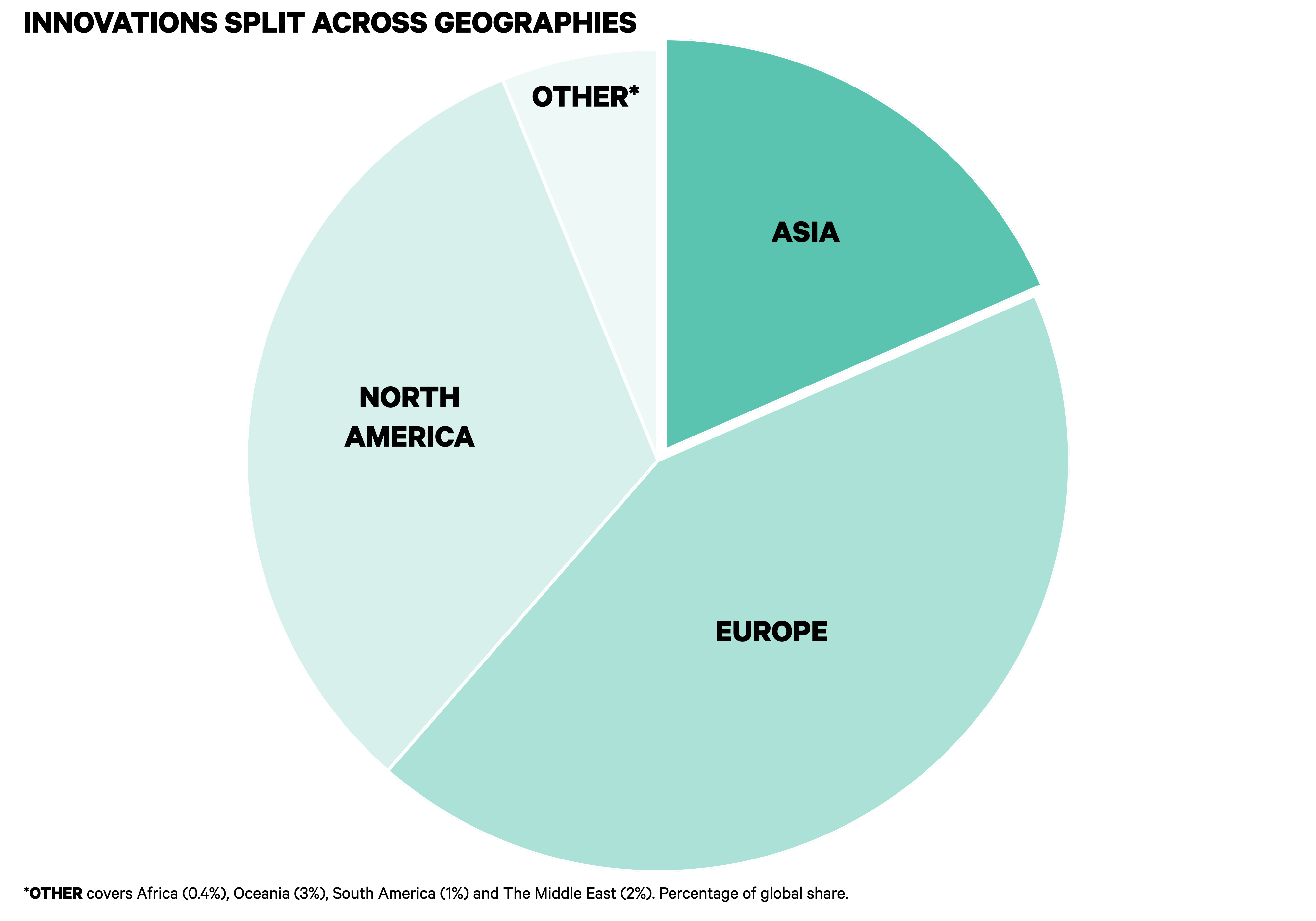 FIGURE 3
FIGURE 3
Fashion for Good’s innovation database, which houses information on over 2500+ innovators around the world, uncovered promising activities at each stage of the supply chain in the Indian landscape.
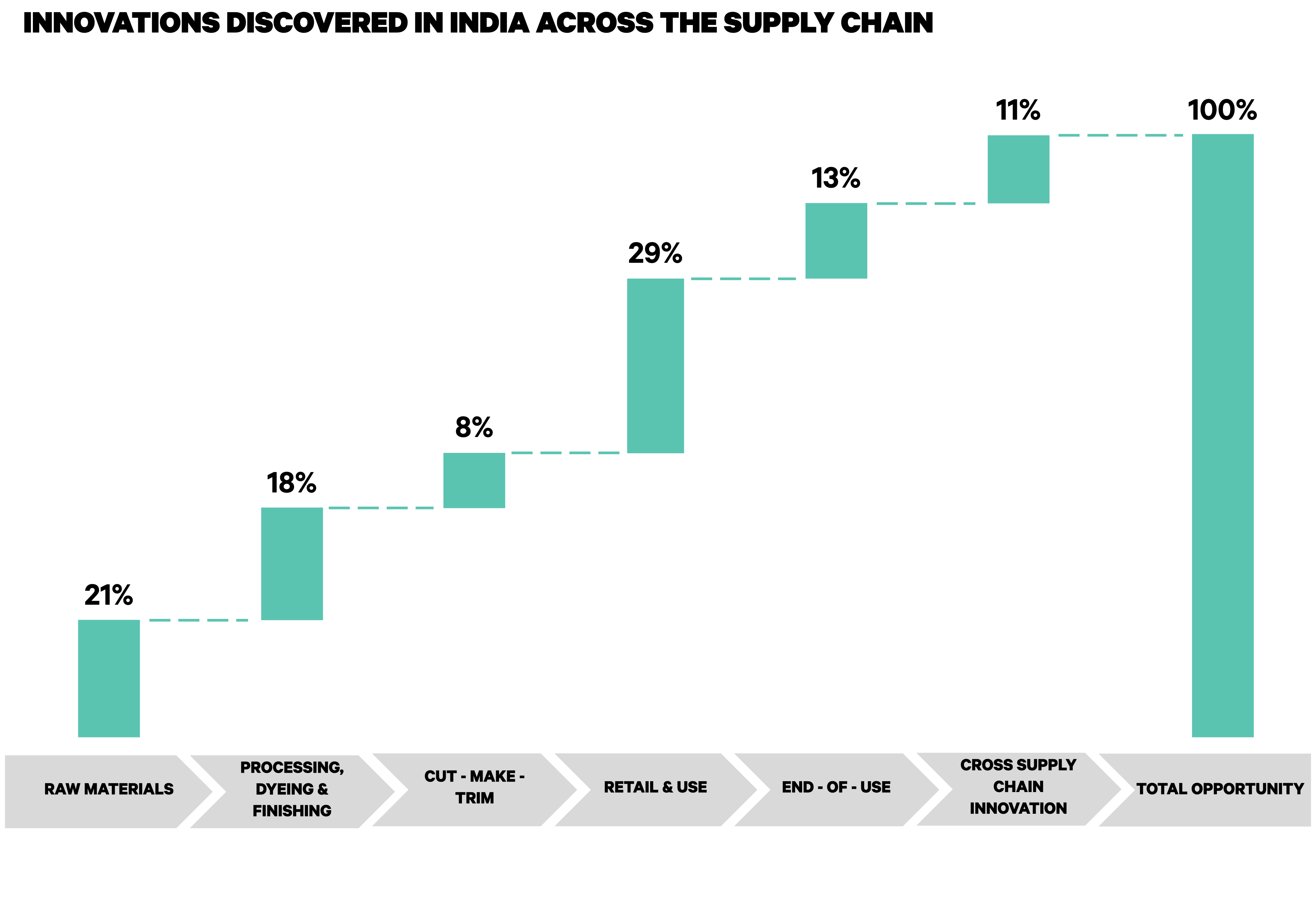 FIGURE 4
FIGURE 4
The following sections of the report highlights innovations according to the supply chain steps above, in both a global and India specific context. Innovations in these key areas will enable major brands, retailers and manufacturers to shift from business as usual to achieving their sustainability goals through a regenerative and restorative approach.
We hope that this research feeds into the growing global movement towards sustainability and circularity. Given India's importance in the fashion industry, this report mapping innovations and actions the industry can take to enable that circular economy is critical and we hope that it shapes the industry's transition.
Lakshmi Poti, Senior Programme Manager, Materials, Laudes Foundation